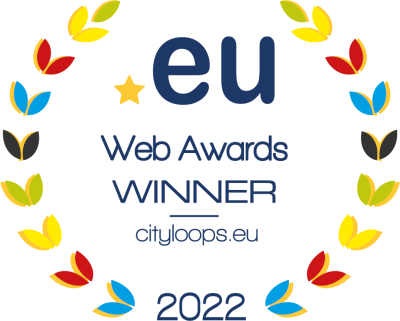Stakeholder engagement
Achieving a circular economy is a multifaceted and complex challenge which requires actions from different societal constituencies. For this reason, local governments – as well as companies or citizens – cannot create it on their own; all of us have a role to play in any circular project. Pursuing stakeholder engagement is crucial to successfully design a project or intervention as it allows to develop a process which inspires individuals, groups, businesses, institutions, and others to improve how they interact. Stakeholder engagement can be defined as finding people with whom to cooperate most effectively to accomplish goals. The effect of stakeholder engagement is not limited to one project or process, as making people feel involved can generate a positive trickle-down effect leading to a higher impact in all actions.
The term stakeholders refers to individuals or groups who have an interest or concern in an organisation, project, or decision-making process. These stakeholders can be internal or external, depending on whether they are directly associated with the internal structure. Moreover, it is important to clarify that while citizens can be stakeholders in certain contexts, not all stakeholders are necessarily citizens, thus citizens engagement actions can be more targeted.
The term actor refers to individuals or entities that participate actively in a situation, process, or event. Actors can include stakeholders, but they can also encompass other participants who may not have a significant interest in the outcome. To best assess how to involve stakeholders, cities need to be aware of these distinctions as well as the different levels of involvement and interaction, ranging from lower and passive engagement to higher levels of active engagement and commitment.
CityLoops cities designed stakeholder engagement plans in the early stages of the project, detailing how to involve all relevant stakeholder groups from planning to evaluation within the demonstration actions. Benefits of stakeholder involvement range from future planning facilitation and risk minimisation to understanding and addressing criticism, as well as reducing constraints on business and increasing license to operate.
Lessons learnt
Stakeholder involvement activities are deemed relatively easy to implement and replicate. Planning these activities requires methodologies, both for identifying stakeholders and understanding their relationships, and for effectively integrating them in a development process. CityLoops demonstration cities have concluded the following from the development of stakeholder engagement activities:
- Stakeholder engagement activities are easily replicable, and manhours are often the biggest resource needed to execute them. It is recommended to start by joining forces with other departments, projects, and initiatives with the same ambitions for stakeholder and citizen involvement in city development.
- Stakeholders should be involved throughout the project as this increases their ownership and sense of responsibility in the process. It also facilitates sharing of insights within the stakeholders’ organisations.
- Know who your target is. Before choosing which participation instrument or method to employ, it is important to assess the characteristics of the citizens and stakeholders to be engaged as this will guide the choice, for example when deciding between digital or analogue tools.
- It is important to keep an open mind for opportunities to include actors with different levels of expertise. This could mean organisations working with knowledge and instruments relevant to a project, as well as stakeholders who have an interest in the outcome of the project, but are not participating in the construction processes or do not have any related expertise.
- Citizen involvement is great for creating political attention and boosting a project’s political and local support. Also, citizens – as potential users of the spaces that are sites to the project – can provide valuable input to address concerns on functionality, and bring to the table different competences, knowledge, and perspectives.
- Engaging stakeholders and other actors in construction projects in an early dialogue and in recurring meetings throughout the projects creates trust and helps foresee and solve problems, as well as overcome barriers as they arise.
- Different competences and knowledge brought by the different actors and stakeholders are key in handling responsibility and risk within the project. For this reason, it is highly important to retain the knowledge created as the project continues and base subsequent decisions on it.
CityLoops instruments
CityLoops has used a participatory planning approach which emphasizes the involvement of all relevant stakeholder groups throughout the entire project. This approach has resulted in the creation of blueprints and a report on involving stakeholders and citizens in the planning phases of a demonstration action:

